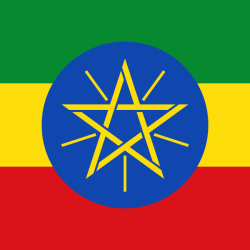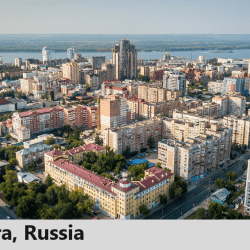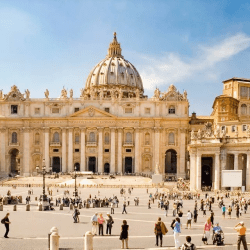The Pacific Ocean is the largest and deepest ocean basin on Earth, covering more than 63 million square miles (165 million square kilometers) and holding over half of all free water on the planet.
Size and Scale of the Pacific Ocean
- Area: ~63 million square miles (165 million km²)
- Percentage of Earth’s Surface: About 30%
- Depth: The deepest point is the Mariana Trench, plunging nearly 36,000 feet (11,000 meters).
- Comparison: All of the world’s continents could fit inside the Pacific basin.
Geologic History
The Pacific Ocean is the oldest existing ocean basin, with its oldest rocks dating back about 200 million years. Over time, plate tectonics have shaped its vast floor, creating trenches, ridges, and volcanic islands.
The Ring of Fire 🔥
One of the most defining features of the Pacific is the Ring of Fire:
- A nearly continuous chain of volcanic arcs, oceanic trenches, and mountain ranges.
- Caused by tectonic plate subduction—where one plate sinks beneath another.
- Responsible for frequent earthquakes and volcanic eruptions along the Pacific rim.
- Includes famous volcanoes like Mount Fuji (Japan), Mount St. Helens (U.S.), and Krakatoa (Indonesia).
Why is the Pacific So Important?
- Climate Regulation: Influences global weather patterns, including El Niño and La Niña events.
- Biodiversity: Home to rich coral reefs and diverse marine ecosystems.
- Trade Routes: Central to international shipping and commerce.
- Cultural History: Played a key role in the spread of ancient civilizations across Asia, Oceania, and the Americas.
How Does the Pacific Compare to Other Oceans?
- 1st: Pacific Ocean – largest and deepest
- 2nd: Atlantic Ocean – about half the size of the Pacific
- 3rd: Indian Ocean – slightly smaller than the Atlantic
- 4th: Southern Ocean – encircles Antarctica
- 5th: Arctic Ocean – smallest and shallowest
The Pacific Ocean basin is Earth’s giant—larger than all the continents combined, older than most landmasses, and more geologically active than any other ocean.
Perfect! Let’s take the information you’ve provided and turn it into a well-structured, SEO-optimized article about the Pacific Ocean, emphasizing its size, geography, and tectonic activity.
Geographic Location and Boundaries
The Pacific Ocean is surrounded by some of the world’s most important landmasses:
- West: Bordered by Asia and Australia
- East: Flanked by North and South America
- North: Connected to the Arctic Ocean
- South: Linked to the Southern Ocean
- Joins with:
- Atlantic Ocean at a line south from Cape Horn (Chile/Argentina) to Antarctica
- Indian Ocean at a line south from Tasmania (Australia) to Antarctica
This central position has made the Pacific vital for trade, exploration, and cultural exchange for thousands of years.
The Pacific Ocean’s Immense Size
- Covers 165 million square kilometers (63 million square miles)
- Holds more than half of Earth’s free water
- Depths:
- Average: ~4,280 meters (14,040 feet)
- Deepest point: Mariana Trench at nearly 11,000 meters (36,000 feet)
All of the world’s continents could fit inside the Pacific Basin—a true testament to its immensity.
Why the Pacific Ocean is Shrinking
Unlike the Atlantic Ocean, which is gradually expanding, the Pacific Ocean is slowly shrinking. This process occurs due to plate tectonics and subduction, where sections of the ocean floor are forced beneath surrounding tectonic plates.
- Subduction Zones: The ocean floor folds downward toward Earth’s mantle.
- Earthquakes: Built-up pressure is released in powerful seismic events.
- Volcanoes: Magma rises from beneath the crust, forming volcanoes—many of which are found in the Pacific.
- Tsunamis: Underwater earthquakes cause massive ocean waves that travel across entire basins.
Why the Pacific Ocean Matters
- Climate Regulation: Drives weather patterns like El Niño and La Niña.
- Biodiversity: Home to vibrant coral reefs, fisheries, and unique marine life.
- Natural Hazards: Source of tsunamis, earthquakes, and volcanic eruptions.
- Economic Importance: Central to global trade routes, fishing, and shipping.
Comparison with Other Oceans
- Pacific Ocean – Largest and deepest
- Atlantic Ocean – Second largest, expanding over time
- Indian Ocean – Warmest, heavily used for trade
- Southern Ocean – Encircles Antarctica
- Arctic Ocean – Smallest and shallowest

The Pacific Ocean is not only the largest ocean on Earth but also the most geologically active. Its immense size, rich biodiversity, and role in climate regulation make it essential to life on Earth. However, its shrinking basin, frequent earthquakes, volcanoes, and tsunamis remind us of the immense power of plate tectonics shaping our planet.











